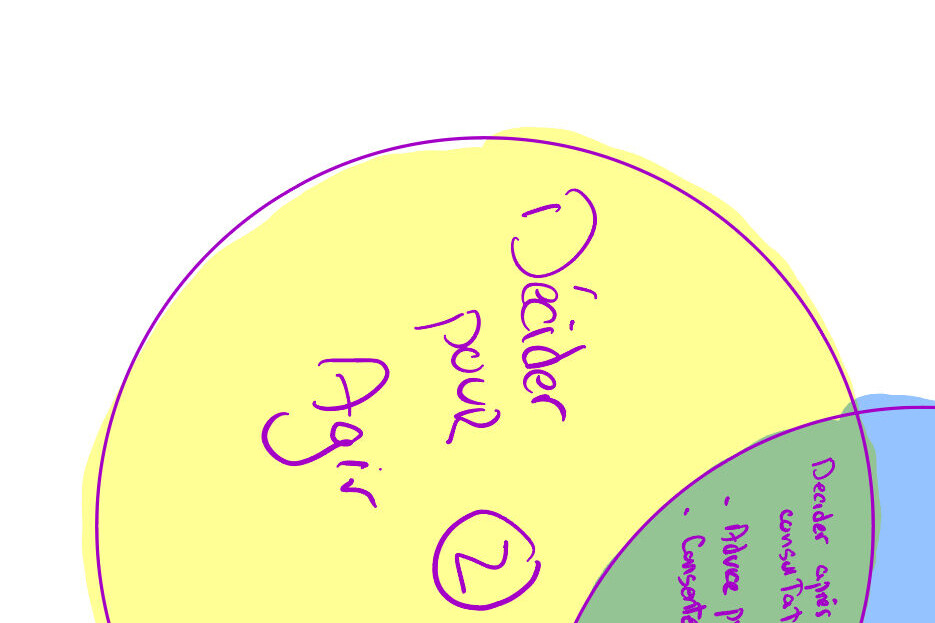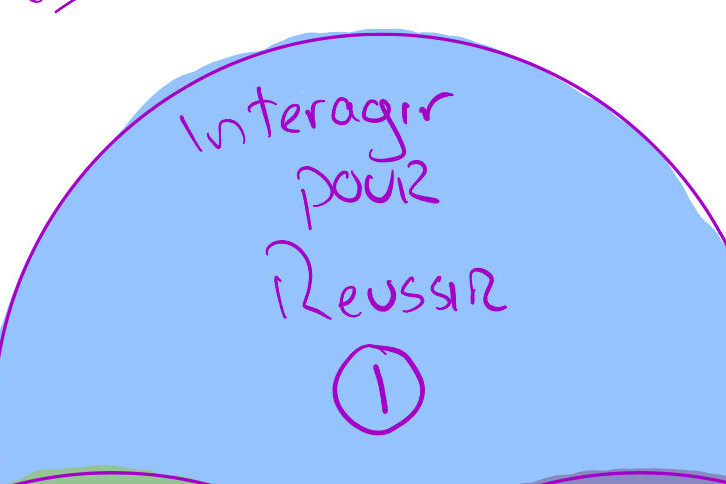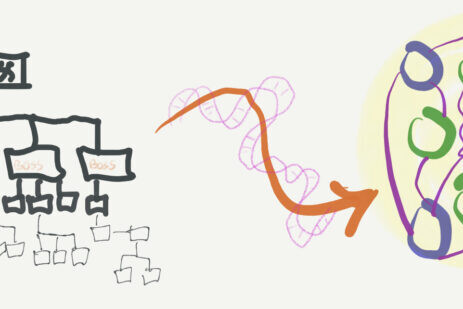Complexity, simply?
Warning : This blog post solves everything. Read it at your own peril.
Second warning : I have a tendency to take everything very seriously …with a heavy dose of humour and self-deprecation.
“Oh, this is a complex situation. We will start a committee and their report will be published in 18 months … oh, make it 24.”
Yeah right … and nothing will be implemented before it is too late. And what will be implemented will be yesterday’s solution to tomorrow’s problems.
We have all heard this story and its variations multiple times in the last decades. Things are moving fast and our governments are moving much more slowly. Sometimes with a speed approaching … zero. Well, that is to be expected. Governments represent stability in our society. This is necessary to ensure social peace and a modicum of efficiency in services. Innovation and performance are usually reserved for companies.
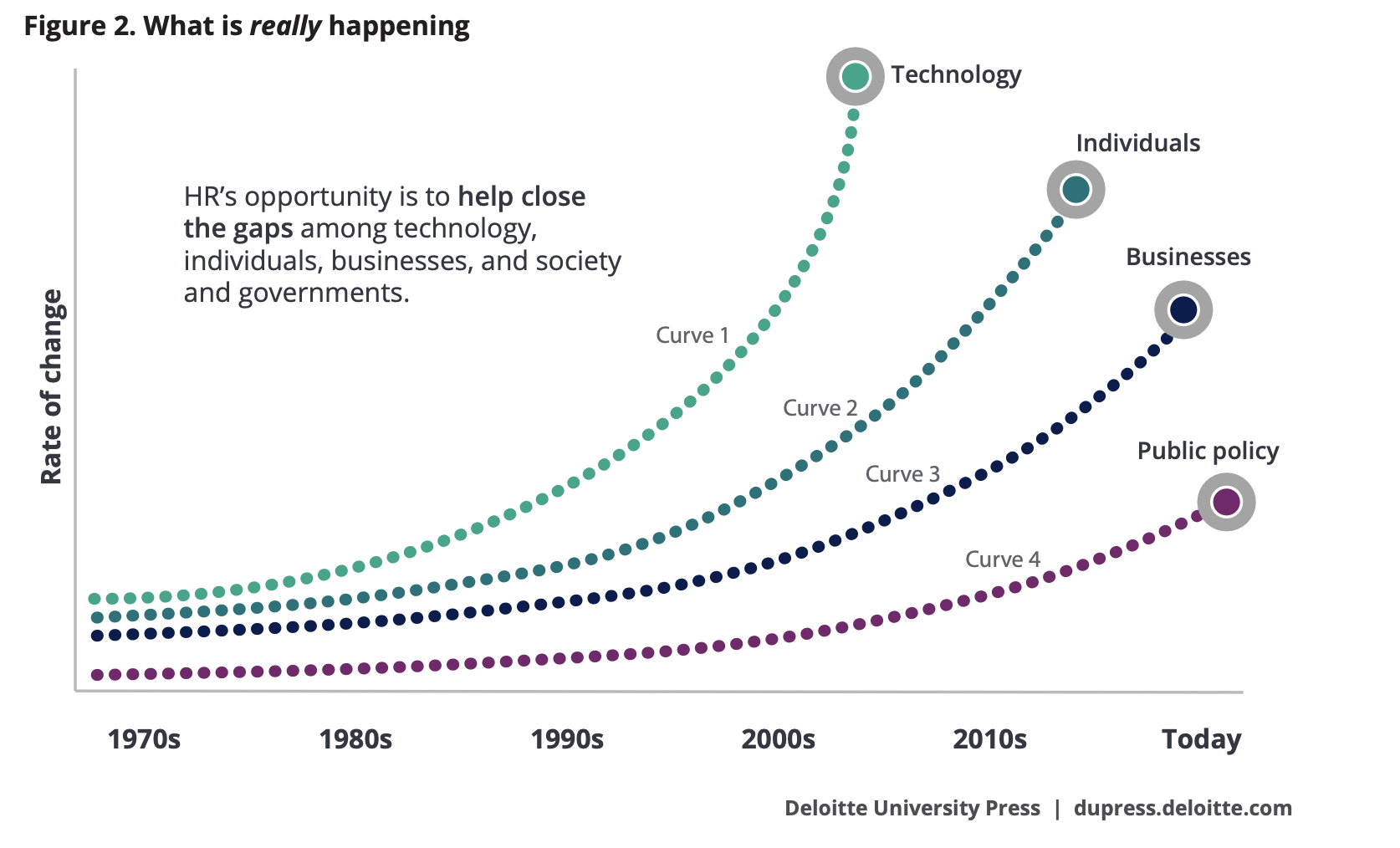
Humans are superheroes as far as technological innovation adoption rate is concerned.
Not as good, however, as far as social evolution is concerned. Especially organizational evolution. Our organizations evolved from the industrial era and for a long time the growth scenario was stable … up, up and up it went. Predictable market growth and profits, 5-year strategies and expansion plans, etc., etc.
Ah yes, and a strong and very stable distribution of power … hierarchies ruled!
But then, but then … deregulation and globalization changed the game.
Re-engineering and restructuring, also known as “massive layoffs to increase profit and shareholders values” or MLTIPASV (ok, I do not win the contest for the best acronym of the year with this one … worth a try!) paved the way for a gradual but important change in the workforce mindset: companies used to be loyal and take care of their employees … not anymore.
This mindset and the 2020 pandemic changed the game once more: what is “work”?
- A stable job at a stable location?
- A stable 9-5 work day and 5 days/week schedule?
- A way to earn a decent living?
- A way to ensure a comfortable future?
Oh … but then:
- How much do I need to get a “decent” living?
- Do I need to actually “get” there to work?
- When do I need to work to accomplish my tasks and my goals?
- What do I need to do the work?
- What did I need then, what do I need now?
- Hey … “they” used to pay for my desk, my chair, my computer and my web connection…
The work environment has to be redesigned.
Insurance costs have to be modified (car insurance, health and safety insurance , health benefits, etc.)
Works conditions have evolved and changed…
Our world had progressively but then suddenly changed tremendously during the first 3 months of the COVID pandemics.
“How did you go bankrupt?” Bill asked.
“Two ways,” Mike said. “Gradually and then suddenly.”
That’s from Ernest Hemingway, in his 1926 breakthrough novel, The Sun Also Rises.
Lock down and technology went hand in hand to make us realized that the old ways were not the only way.
It also made us realize that complexity was all around us and that the “old” way of managing crisis was simply not working anymore. No government around the world could “solve” the crisis in a satisfactory and permanent way.
- China used rigid lock down (… 3 years later, just as autocratically, let everyone out , with no vaccine, no restriction, no education…)
- New Zealand shut itself off from the rest of the world
- Scandinavian country trusted their citizens to be reasonable
- Quebec convinced its citizens that flattening the curve would make sure that “it is going to be ok!” Using a rainbow ( … and a unicorn?) along with multiple lockdowns accompanied by weird rules about masking/unsmasking in restaurants…
- The USA … did almost nothing. After all, their strangely-hued president’s faith that the virus would go away before summer and a good dose of intravenous disinfectant might do the job, but he was no doctor, right? … Right?
But then, hey, this was a complex situation.
Dealt with a complicated set of rules and procedures dictated to populations used to follow the rules, blindly. But then, going into our fourth year of pandemic, we are finding that complicated rules do not work well or for a long time to solve a complex solution.
The American journalist H. L. Mencken said it best:
“Every complex problem has a solution which is simple, direct, clear—and wrong.”
This applies to pandemic management, organization management, government management or the climate change crisis looming over our heads and about to strike us in a way no one can imagine.
What do we do then?
I like to keep things simple. This might sound like a dichotomy but it is not.
If complicated solutions do not work
If simple solutions do not work
How could simplicity work?
Before continuing reading, watch the following video (Or click here ).
I am no expert in chaos theory. Not even a novice!! But the basic premise is that out of chaos will emerge …something. A strange attractor will coalesce. In fact, it is the only thing that will emerge at that precise moment, starting with the initial and specific conditions…unless a tiny part of the initial conditions changed…think also of the popular butterfly effect
How do we, might we, apply this concept to organizations, governments and societies ?
Simply.
I do not know.
At least not specifically.
But then a hint might be acquired from this photograph.
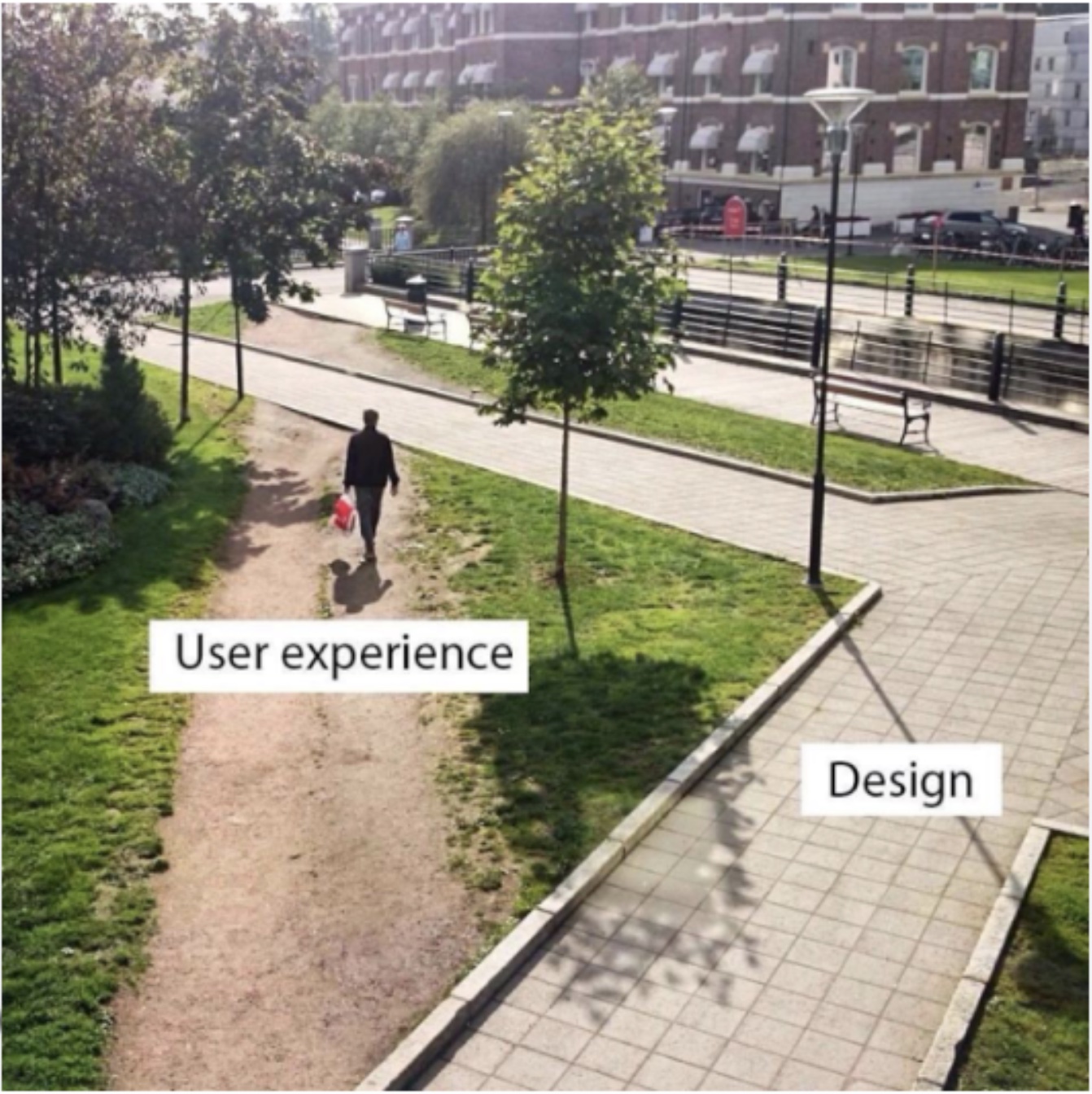
Some insight can be gained for this and be dealt with accordingly.
Couldn’t we do this more frequently?
When it is time to find a way to stop a pandemic for instance. Couldn’t we let hospital staff or school teachers “try” something and wait for the best solutions to emerge instead of waiting for the government to impose a solution that will inevitably fail as it will have been studied and implemented in an orderly and complicated fashion at a pace too slow to make it worthwhile?
The Cynefin framework imagined any Dave Snowden proposes such a way … probe first, then make sense of the insight before acting for good … always looking back for more insights before the next step. After all, and especially in dealing with complexity, hind sight is always 20/20!
What could have been the strange attractors during COVID ? My guess is a mask, ventilation, distancing (not a 1 or 2 metres … but far enough…), isolation, quarantine and vaccines … not forced but simply (that word again!) “discovered” from multiple trials and not ego-based. Since the propagation of the virus has not been not stopped yet, this also implies that we are still looking for the best way to tackle this very complex situation. Ah yes, and government around the world might not have removed any sanitary constraint that proved beneficial (mask , ventilation, isolation, etc.).
But first, before trying this “strange attractor” concept freely, we need to first do something with the strange attractor nemesis. To make sure the concept works it needs the proper environment to exist and let the “solutions” emerge.
My friend and colleague Jon Husband and I were planning a workshop on complexity a few years ago and we were discussing this concept. I then asked, out of the blue, what would be the opposite of a strange attractor? And Jon spontaneously replied…”Hmm … a familiar repulsor?”
Jon is famous for his neologism Wirearchy .
Well, it seems he has a knack for neologisms: Familiar repulsors! My mind started to spin!
A familiar repulsor is a construct of the mind, a figment of our imagination that seems essential and real, that prevents any strange attractor from emerging! These are powerful inhibitors!
Boy, oh boy, do we have familiar repulsors in our organizations, our government and our societies : paradigms and intellectual biases inherited from millennia of religious beliefs, centuries of profit-oriented management and careless waste of resources….
Familiar repulsors include the traditional hierarchical organizational structure or course but also such tools and systems such as the ultimate box we keep thinking outside of…the org chart’s job descriptions!
Other repulsors include (A lot list was first presented to me by Niels Pfleaging in his book , Organize for complexity )
- annual budget exercise,
- formal vacation planning,
- performance evaluation,
- expense reports or allowances,
- individual performance bonuses,
- metrics
- and dozens of other “tools” to control our organizations’ and government’s “most precious assets” … human beings.
Those same human being who, for as long as they have existed, were able to deal with the natural complexity around them. Sure, technology and tools helped them get better at it but ultimately, those tools and technologies only leveraged their real selective advantage: their big brain and their ability to adapt.
Remove familiar repulsors then … and let complexity (and some chaos of course) re-emerge in order for the human brain to kick in and start searching for solutions once more.
Let the pedestrians trace the paths…
Let the teachers find the best way to teach…
Let the nurses and doctor manage their patients and the environment around them
Let citizens move around their city and make businesses flourish…
Let employees know the ultimate directions, let them interact with their clients and let them do their work,
unhindered by bureaucracy and technocrats…
Then, offer structure to support what emerged.
Not the other way around.

Structure by itself is like a leafless tree…
heavy and useless without its leaves!
Do not even try to “manage” complexity but get ready for it by staying alert, aware, vigilant and flexible. Ah yes … this is not a simple solution … it involves letting go of the rigid structures and paradigms we have accepted as “natural” for too long.
“Every complex problem has a solution which is simple, direct, plausible—and wrong.”
We have tried rules and regulations.
We have tried complicated procedures and numerous forms.
When forced to act rapidly, we have even tried chaotic and fast responses.
It might be time to try to take a step back and reflect upon the complex interactions between all those systems and look for the strange, very strange attractors … simply ?
Voluntary contribution
The blog is free but…
If this article has touched you, changed your mind or perspective, or expanded your mind… remember that free content on the web comes at a cost to the content creator.
Thank you in advance for your contribution.
Thank you in advance for your possible contribution.
Subscribe to this blog and don’t miss a single post!
Send the hyperlink of this article to a friend or colleague who could benefit from it; do not copy the content in an email.
Share this article on your favorite social network! You can’t imagine the impact on the visibility of my site!
Please do not photocopy without asking permission from the author… flavallee@aliterconcept.com… that’s me!
Photo by Mykyta Martynenko on Unsplash
ARTICLES RÉCENTS
5 juin 2024
La première loi : Interagir pour réussir
La première loi : Interagir pour réussir! Mouvements et interactions Pour atteindre les objectifs,…
23 mai 2024
Les lois de la biologie organisationnelle
L’origine du concept: La faute à Jocelyn ! Un collègue m’a un jour dit que mon concept de biologie…
1 février 2024
Hybride? Faites-moi confiance!
Hybride? Faites-moi confiance! Retour en 1998 : Oui ça m’intéresse. Beaucoup. J’ai quelques…


